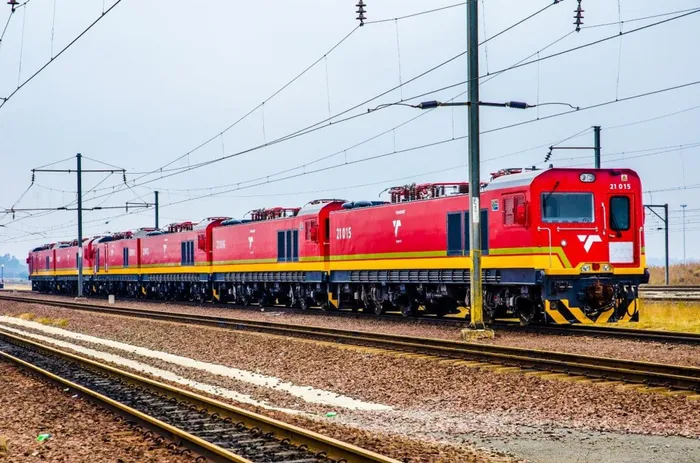Freight crisis looming for South Africa as e-commerce giants shift to sea cargo

Transnet haemorrhaged R1bn annually on the Durban to Johannesburg corridor between 2014 and 2019, with losses hitting R3bn yearly during Covid-19.
Image: Supplied
The influx of e-commerce behemoths Shein, Temu and Amazon is about to create a freight crisis in South Africa as their shift from air to sea cargo threatens to overwhelm the already buckling Durban-Gauteng corridor.
As volumes scale, these giants will switch from air freight in favour of container shipping, putting additional pressure on a route where rail carries a dismal 14% of cargo – nowhere near the National Development Plan's 50% target.
The rising tide of imported cars adds to the looming crunch.
The Port of Gauteng, a R50 billion inland port, could be a solution.
Positioned at the junction of the Container Rail Corridor and the N3, N12 and N17 highways, the facility will feature two 2.2km flat rail alignments, a world-class car terminal and container rail terminal designed for rapid, high-volume throughput.
The project targets 50,000 permanent jobs and seamless train-to-truck transfers using performance-based standards (PBS) vehicles – long truck-trailer combinations carrying two containers that could slash truck movements by 40%.
Transnet's meltdown
The urgency is stark. Transnet haemorrhaged R1bn annually on the corridor between 2014 and 2019, with losses hitting R3bn yearly during Covid-19.
Rail volumes crashed from 80 trains daily to just 15 by 2023-2024.
Infrastructure theft, aging assets and capacity constraints plague the state-owned freight operator. In 2023 alone, rail inefficiencies cost the economy R353bn – 4.9% of gross domestic product.
Rail also lost ground after the N3 highway was modernised, offering faster travel times. Now the N3 is congested, creating a vicious cycle.
White paper warning
Port of Gauteng's white paper, released at the start of October’s Transport Month, warns that without "decisive" action, national development objectives will collapse.
With four years until the NDP 2030 deadline, South Africa needs a one-third reduction in N3 truck traffic and a logistics cost cut without unsustainable government rail subsidies.
"Port of Gauteng changes everything. It provides the missing link that makes rail competitive again. With purpose-built rail alignments and future three-hour turnaround times at the container and car terminals, we can finally deliver the reliability that shippers demand," says Mike Daniel, CEO of RailRunner South Africa.Get your news on the go. Download the latest IOL App for Android and IOS now
Developer Francois Nortjé frames it as existential. "We're creating Africa's most advanced inland trade gateway. This facility represents our commitment to solving South Africa's freight crisis whilst generating massive economic returns. The 50,000 permanent jobs are just the beginning; we're creating a platform for decades of sustainable growth."
Dr Paul Nordengen, director at Heavy Vehicle Transport Technology Africa, calls the PBS vehicle integration "the most significant advancement in heavy vehicle transport efficiency we've seen in decades – reducing truck movements by up to 40% and improving safety outcomes on our most critical trade corridor."
The PBS pilot project is likely to be extended by three years to allow for further research, after which a decision will be made regarding the adoption of this approach into legislation.
IOL Business